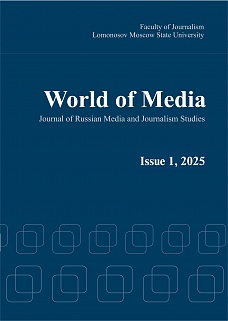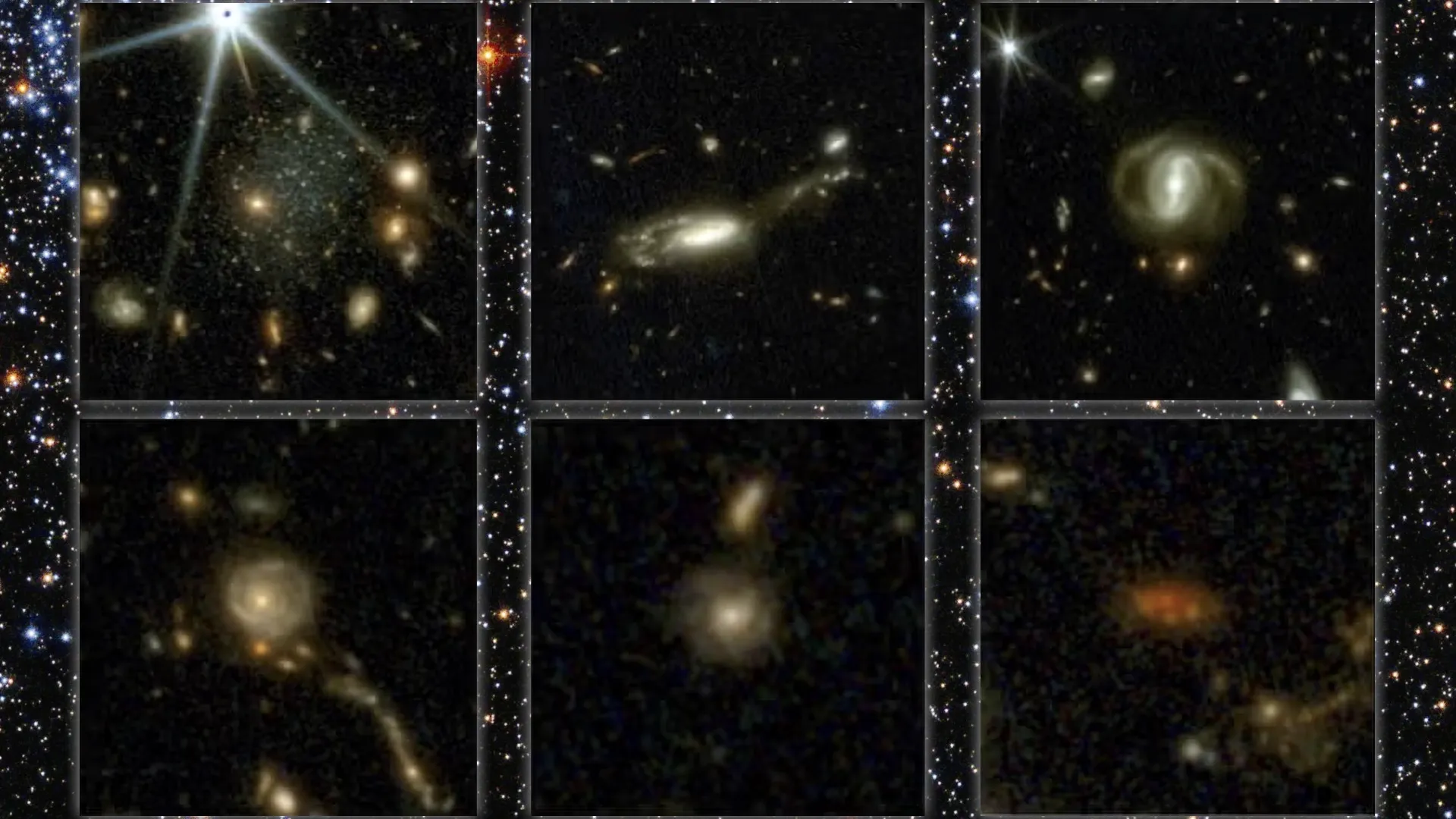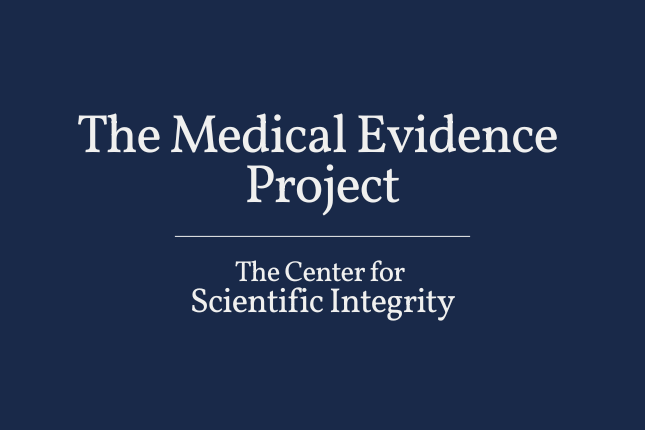One journal’s trash is another’s treasure – until a former peer reviewer stumbles across it and sounds an alarm. In April, communications professor Jacqueline Ewart got a Google Scholar notification about a paper published in the World of Media she had reviewed, and recommended rejecting, for another journal several months earlier. At the time, she recommended against publishing the article, “Monitoring the development of community radio: A comprehensive bibliometric analysis,” in the Journal of Radio and Audio Media, or JRAM, because she had concerns the article was written by AI. She also noticed several references, including one she supposedly wrote,…
-
-
In the name of open science, the multinational scientific collaboration COSMOS on Thursday released the data behind the largest map of the universe. Called the COSMOS-Web field, the project, built with data collected by the James Webb Space Telescope (JWST), consists of all the imaging and a catalog of nearly 800,000 galaxies spanning nearly all of cosmic time. And it’s been challenging existing notions of the infant universe. “Our goal was to construct this deep field of space on a physical scale that far exceeded anything that had been done before,” said UC Santa Barbara physics professor Caitlin Casey, who…
-
The Center for Scientific Integrity, the parent nonprofit of Retraction Watch, has launched a new initiative to investigate and rapidly disseminate problems in the medical literature that directly affect human health. Thanks to a $900,000 grant from Open Philanthropy, the Medical Evidence Project will leverage the tools of forensic metascience — using visual and computational methods to determine a paper’s trustworthiness — to rapidly identify problems in scientific articles, combined with the experience and platform of Retraction Watch to disseminate those findings. “We originally set up The Center for Scientific Integrity as a home for Retraction Watch, but we always…
-
https://www.lastwordonnothing.com/wp-content/uploads/2025/05/juncos-2.mp4 Don’t read too much into this, but I have become an obsessive bird spy. I blame LaWONian Ben Goldfarb. He wrote a post about his birdcam (and the board game Wingspan, which I still intend to try), and it made me think that a birdcam would be a great Mother’s Day gift. I consulted with Ben and selected one for Mom. Mom liked the gift well enough (she would never tell me otherwise), but it has attracted mostly rodents and she can’t keep it up all of the year due least she attract the bears in her neighborhood among…
-
In an important contribution from the social sciences, Rice University anthropologists Cymene Howe and Dominic Boyer examine the societal consequences of global glacier loss in a commentary published today in Science. Their article appears alongside new research that estimates that more than three-quarters of the world’s glacier mass could disappear by the end of the century under current climate policies. While the study projects the physical outcomes of glacial melt, Howe and Boyer highlight the social impacts and human stories behind the statistics — from disrupted ecosystems and endangered cultural heritage to funeral rites held for vanished ice. “Often statistics…
-
Long considered a disease brought to the Americas by European colonizers, leprosy may actually have a much older history on the American continent. Scientists from the Institut Pasteur, the CNRS, and the University of Colorado (USA), in collaboration with various institutions in America and Europe, reveal that a recently identified second species of bacteria responsible for leprosy, Mycobacterium lepromatosis, has been infecting humans in the Americas for at least 1,000 years, several centuries before the Europeans arrived. These findings will be published in the journal Science on May 29, 2025. Leprosy is a neglected disease, mainly caused by the bacterium…
-
Spring in the Arctic brings forth a plethora of peeps and downy hatchlings as millions of birds gather to raise their young. The same was true 73 million years ago, according to a paper featured on the cover of this week’s edition of the journal Science. The paper documents the earliest-known example of birds nesting in the polar regions. “Birds have existed for 150 million years,” said lead author Lauren Wilson, a doctoral student at Princeton University who earned her master’s degree at the University of Alaska Fairbanks. “For half of the time they have existed, they have been nesting…
-
In 1984, an amateur paleontologist in Scotland found a remarkable specimen: a nearly complete fossil of what looked to be a lizard or salamander. Rather small in size at 20 centimeters, it would turn out to be a crucial piece in the puzzle of animal evolution. This creature, called Westlothiana lizziae, is one of the earliest examples of a four-legged animal that had evolved from living underwater to dwelling on earth. It, and other stem tetrapods like it, are common ancestors of the amphibians, birds, reptiles and mammals that exist today, including humans. Despite its significance, researchers had never determined…
-
Researchers from the MPIK present new experimental and theoretical results for the bound electron g-factor in lithium-like tin which has a much higher nuclear charge than any previous measurement. The experimental accuracy reached a level of 0.5 parts per billion. Using an enhanced interelectronic QED method, the theoretical prediction for the g-factor reached a precision of 6 parts per billion. Quantum electrodynamics – competition for precision Quantum electrodynamics (QED) is the fundamental theory describing all electromagnetic phenomena including light (photons). At the same time, it is the most precisely tested theory in physics at all. It has been stringently tested…
-
The findings, published today in the journal, Science, are striking. Even if global temperatures were stabilised at today’s level of 1.2°C, an estimated 39 per cent of global glacier mass would still be lost compared to 2020 levels — contributing over 10 centimetres to global sea-level rise. In the new study, an international team of 21 scientists from ten countries used eight glacier models to calculate the potential ice loss from more than 200,000 glaciers outside of Greenland and Antarctica. The team evaluated a wide range of global temperature scenarios, assuming that temperatures would remain constant for thousands of years…



